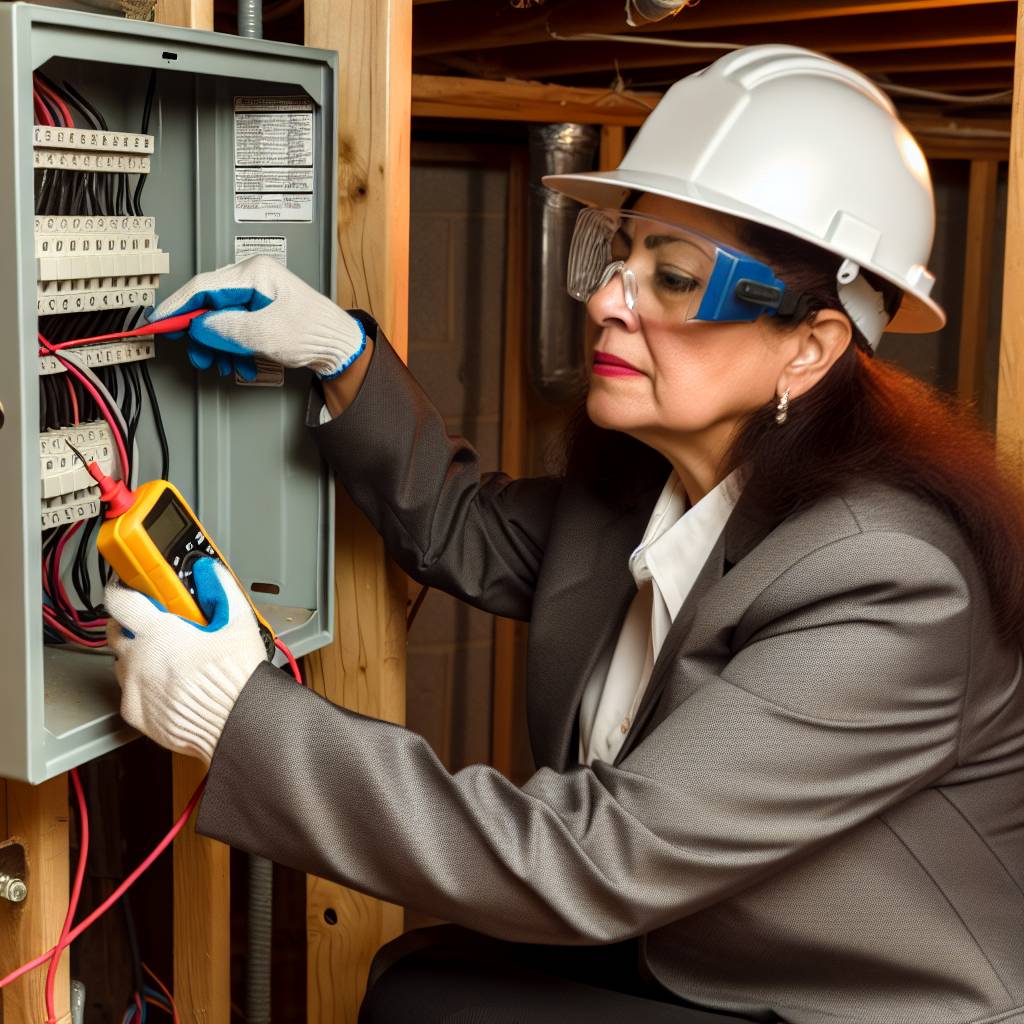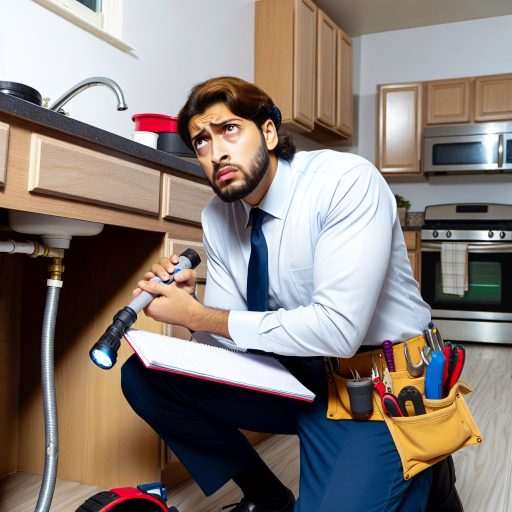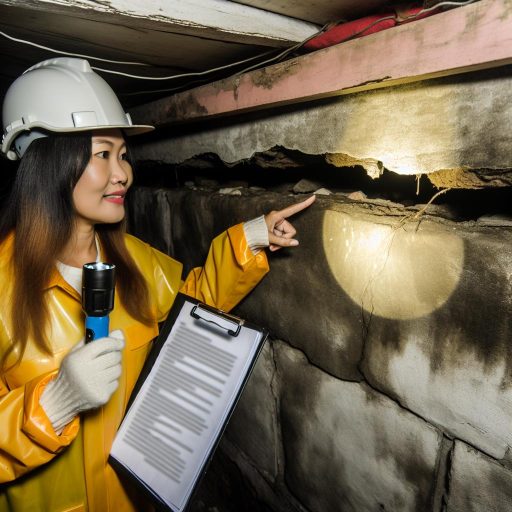Introduction to Home Inspections and Their Importance
Home inspections play a crucial role in real estate transactions.
They ensure properties meet safety standards and are in good condition.
One of the most critical aspects of a home inspection is electrical safety.
Identifying electrical problems can prevent potential hazards.
Moreover, a detailed inspection can protect homebuyers from costly repairs.
Home inspections provide peace of mind to prospective buyers.
They help buyers make informed decisions about their investments.
Regular home maintenance also benefits from electrical inspections.
These checks can detect issues before they escalate into major problems.
In summary, home inspections are essential for ensuring safety and maintaining property value.
Understanding Common Electrical Problems in Homes
Frequent Electrical Issues
Homeowners often face various electrical problems.
One common issue is faulty wiring.
This can lead to serious hazards, including fires.
Another frequent problem involves circuit breakers tripping unnecessarily.
Such interruptions can be frustrating and inconvenient.
Transform Your Real Estate Decisions
Unlock personalized real estate insights crafted just for you. Get actionable advice designed to amplify your success.
Get StartedAdditionally, flickering lights often indicate underlying issues.
These may suggest loose connections or overloads in the circuit.
Electrical Outlets and Switches
Electrical outlets can also present problems.
Some outlets may not work at all, signaling deeper issues.
Furthermore, outlets that are warm to the touch are risky.
This situation can indicate a potential fire hazard.
Another concern arises with switches that do not operate properly.
They may be faulty or have poor connections.
Surge Protection and Power Quality
Surge protection is crucial for modern homes.
Without it, devices can suffer damage from power spikes.
Moreover, power quality issues can result in equipment malfunction.
Voltage fluctuations might disrupt sensitive electronics.
Homeowners should monitor for signs of poor power quality.
Signs of Overloaded Circuits
Recognizing overloaded circuits is essential for safety.
Showcase Your Real Estate Business
Publish your company profile on our blog for just $200. Gain instant exposure and connect with a dedicated audience of real estate professionals and enthusiasts.
Publish Your ProfileCommon signs include warm outlets and dimming lights.
Increased heat from wiring also indicates problems.
Such conditions can lead to significant electrical failures.
Take immediate action if you notice these indications.
Tools and Equipment Needed for an Electrical Home Inspection
Essential Tools
Start with a multimeter to measure voltage, current, and resistance.
This device helps identify electrical issues accurately.
Next, use a non-contact voltage tester to check for live wires.
This tester enhances safety during your inspection process.
Bring a circuit tester to verify the functionality of outlets.
It ensures all electrical connections work properly.
Safety Gear
Always wear insulated gloves to protect yourself from shocks.
Consider using safety goggles for eye protection.
Labeling tape can help identify circuits while you work.
Additional Equipment
Use a flashlight to inspect dark areas effectively.
A power strip can help you power multiple tools simultaneously.
Keep a notebook handy for detailed observations.
This method allows for organized notes during inspections.
Discover More: How To Save For A Down Payment As A First-Time Homebuyer In The USA
Exterior Electrical System Inspection: Service Panels and Meters
Overview of Service Panels
A service panel distributes electricity throughout your home.
It serves as the central hub for circuits.
Inspecting the service panel ensures safety and functionality.
Identifying Service Panel Issues
Begin by checking for rust or corrosion.
Exposed wiring may indicate serious problems.
Ensure that circuit breakers are labeled correctly for clarity.
Look for signs of overheating, such as burnt spots.
Verify that all breakers are securely in place.
Meter Inspection Essentials
The electric meter tracks your energy usage.
Inspect the meter for physical damage or wear.
Check for proper sealing on the meter casing.
Look for any signs of tampering, which is a serious issue.
Showcase Your Real Estate Business
Publish your company profile on our blog for just $200. Gain instant exposure and connect with a dedicated audience of real estate professionals and enthusiasts.
Publish Your ProfileElectrical Connections
Examine all connections with care.
Ensure connections are tight to prevent arcing.
Loose connections can lead to overheating and fires.
Consider hiring a professional if you notice issues.
Grounding System Examination
Inspect grounding wires to ensure safety.
Check that the grounding system is intact and connected properly.
A well-grounded electrical system prevents shock hazards.
Look for grounding rods and ensure they are not corroded.
Outdoor Electrical Components
Assess outdoor outlets, ensuring they are weatherproof.
Replace any damaged covers to maintain safety.
Examine light fixtures to confirm they are functional.
Check for secure fittings on all outdoor connections.
Uncover the Details: Steps To Qualify For A Home Loan As A First-Time Homebuyer In The USA
Interior Wiring Inspection: Outlet and Switch Functionality
Importance of Inspecting Electrical Outlets
Electrical outlets are essential for home functionality.
They provide power for appliances and devices.
Regular inspection ensures they work properly.
Additionally, faulty outlets can pose safety hazards.
Visual Inspection of Outlets
Begin by examining each outlet visually.
Look for visible damage or discoloration.
Cracked or scorch marks suggest potential issues.
Ensure outlet covers are not loose or broken.
A clean appearance indicates proper maintenance.
Testing Outlet Functionality
Use a voltage tester to check outlet functionality.
This tool can detect live circuits effectively.
Plug in a device to confirm it receives power.
Try different devices to gauge outlet reliability.
Inspect for flickering lights or unusual sounds.
Assessing Switch Operation
Switches should operate smoothly without resistance.
Test each switch multiple times for consistency.
Ensure lights turn on and off as expected.
Showcase Your Real Estate Business
Publish your company profile on our blog for just $200. Gain instant exposure and connect with a dedicated audience of real estate professionals and enthusiasts.
Publish Your ProfileUnusual heat or noise indicates underlying problems.
Report any inconsistencies to a qualified electrician.
Identifying Signs of Overloading
Look for outlets with multiple plugs or extension cords.
Overloaded circuits can lead to electrical fires.
Replace old or worn outlets to improve safety.
Use wall plates with built-in surge protectors where needed.
This measure can protect devices from power surges.
Professional Advice and Assistance
If you encounter issues, consult a professional electrician.
They can perform more comprehensive testing.
Regular inspections by certified professionals are advisable.
This strategy helps maintain electrical system health.
Ensure your home remains safe and up to code.
Uncover the Details: How to Secure the Best Mortgage for Your Financial Situation

Safety Measures and Precautions During Electrical Inspections
Understanding the Importance of Safety
Safety is paramount during electrical inspections.
Electrical systems can be hazardous if improperly handled.
Each inspection should begin with a thorough understanding of potential risks.
Personal Protective Equipment
Wear appropriate personal protective equipment (PPE) at all times.
Safety glasses protect your eyes from sparks and debris.
Insulated gloves minimize the risk of electrical shocks.
Hard hats safeguard against falling objects in overhead areas.
Assessing the Work Area
Evaluate the inspection area before beginning any work.
Look for hazards such as wet floors or exposed wires.
Ensure proper lighting to see potential dangers clearly.
Maintain clear access to emergency exits for quick evacuation.
Using Tools Safely
Always use insulated tools when working on electrical systems.
Verify that tools are in good condition before use.
Avoid using tools with damaged insulation or exposed metal parts.
Power Source Precautions
Shut off the power source before inspecting any electrical system.
Use lockout/tagout procedures to ensure the power remains off.
This prevents accidental reactivation of equipment.
Showcase Your Real Estate Business
Publish your company profile on our blog for just $200. Gain instant exposure and connect with a dedicated audience of real estate professionals and enthusiasts.
Publish Your ProfilePerforming Inspections
Follow a systematic approach during the inspection process.
Check for overloaded circuits and signs of wear on wiring.
Investigate any flickering lights or tripped breakers carefully.
Reporting and Documentation
Document all findings during the inspection thoroughly.
Maintain detailed records of any safety hazards identified.
This ensures that necessary actions can be taken promptly.
Emergency Preparedness
Prepare for emergencies by having a first-aid kit on-site.
Know the location of the nearest fire extinguisher.
Have an emergency contact list readily accessible.
Discover More: Hidden Costs Of Buying A Home Every First-Time Buyer Should Know
Identifying Signs of Overloaded Circuits and Fire Hazards
Understanding Overloaded Circuits
Overloaded circuits occur when too much electrical current flows through a circuit.
This can lead to overheating and potential fire hazards.
Signs of overloaded circuits often include flickering lights.
Additionally, you may notice circuit breakers frequently tripping.
Worn-out outlets may also indicate overload issues.
Recognizing Fire Hazards
Fire hazards can stem from various electrical problems.
Damaged wiring is a common cause of electrical fires.
Other problem signs include scorch marks around outlets.
Moreover, unusual smells, such as burnt plastic, should raise concern.
Always be cautious if devices are excessively hot to the touch.
Inspecting Electrical Equipment
Regularly check all electrical equipment for wear and tear.
Inspect cords for frays or other damage regularly.
Avoid using equipment with damaged plugs or cords.
Always unplug devices that emit strange sounds.
Maintaining Circuit Breakers and Fuses
Check circuit breakers for signs of wear and malfunction.
Ensure fuses are the correct size for the circuit they protect.
Regularly test circuit breakers to ensure proper functioning.
Be alert if you hear popping noises from the breaker box.
Seeking Professional Assistance
If you notice any warning signs, consult a licensed electrician.
They can identify problems that may not be visible to the untrained eye.
Showcase Your Real Estate Business
Publish your company profile on our blog for just $200. Gain instant exposure and connect with a dedicated audience of real estate professionals and enthusiasts.
Publish Your ProfileProfessional inspections can significantly improve your safety.
Safety should always be your top priority during any electrical issues.
Documenting Findings and Recommending Professional Help
Importance of Accurate Documentation
Accurate documentation is crucial for identifying electrical problems.
Keep a detailed report of all findings during the inspection.
This report serves as a reference for future evaluations.
It also aids professionals in understanding the issues at hand.
Key Aspects to Document
Start by noting down any visible wiring issues.
Look for frayed wires or exposed connections.
Document any flickering lights or frequently tripping breakers.
Record the location of each issue for easy reference.
Take photographs to visually support your findings.
When to Recommend Professional Help
It’s vital to know when to call in an expert.
Recommend professional help if the problems are extensive.
If you encounter unfamiliar equipment, seek assistance.
Additionally, advise homeowners if safety standards are compromised.
Selecting the Right Professional
Choose an electrician with relevant experience.
Verify their licensing and insurance credentials.
Check for reviews or testimonials from previous clients.
Consider their response time and availability for emergencies.
Communicating Your Findings
Clearly communicate your findings to homeowners.
Provide them with a written report for their records.
Discuss the potential risks associated with the issues identified.
Explain the importance of addressing these problems promptly.
Follow-Up Recommendations
Set up a follow-up appointment if necessary.
This ensures that all issues are correctly addressed.
Encourage homeowners to monitor any changes observed.
Provide tips on maintaining their electrical systems safely.
Additional Resources
What should I do during a home inspection? I’m the buyer : r …




